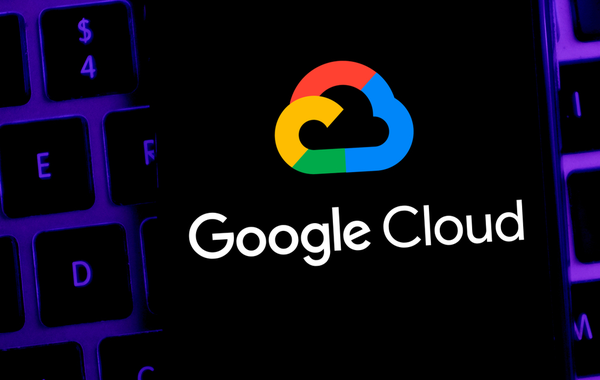Google sprang a surprise at the ongoing Google Next Cloud conference by introducing its own ARM-based CPU called Axion, which will be offered to customers in its cloud service.
Google claimed the CPU is based on cutting-edge ARM design and is significantly faster than other ARM-based CPUs available via cloud services.
The Axion CPU has “30% better performance than the fastest general-purpose Arm-based instances available in the cloud today,” Google said in a press statement.
 Axion also has “50% better performance than comparable current-generation x86-based VMs” and “60% better energy efficiency than comparable current-generation x86-based VMs,” Google said.
Axion also has “50% better performance than comparable current-generation x86-based VMs” and “60% better energy efficiency than comparable current-generation x86-based VMs,” Google said.
Google did not share technical details on the CPU’s construct and the core ARM architecture underneath it. The VM instances based on the CPU will be available later this year.
Every major cloud provider has its own ARM-based CPU. Amazon was first in the race with its Graviton CPU, with its most recent CPU codenamed Graviton 3E, which is targeted at high-performance computing. Microsoft introduced the ARM-based Cobalt CPU in November, which the company also claimed was the fastest.
In previous interviews with HPCwire, Google executives have talked about building an integrated design where its TPUs work hand-in-hand with its computing architecture. Google’s ARM-based CPUs will likely be designed into its homegrown systems. The company’s most significant hardware offering is the TPU v5p AI chip.
Axion is already in use for applications such as Google Earth Engine and the YouTube Ads platform in Google Cloud, Google said.
Google’s homegrown CPU is a part of diversifying its offerings. The company is also adding outside CPUs and GPUs to its cloud offerings to reach out to a wide range of customers.
Google building “Sovereign Clouds” with air-gapped Nvidia Blackwell GPU servers
Google is making space in its data center for Nvidia’s Blackwell GPUs, which will be available early next year. The offerings will include a dedicated hardware offering that is completely controlled by customers.
The company will offer the new Nvidia B200, which is a Blackwell GPU, and the rack-level GB200 NVL72, which includes 72 Blackwell GPUs and 36 CPUs, in its cloud service.
The company will also offer an air-gapped version of systems with Nvidia GPUs, which may be attractive to government and high-performance computing users.
The air-gapped Blackwell GPU configuration is part of an offering called Google Sovereign Clouds, which puts AI controls in the hands of customers by limiting access.
“For the most stringent regulatory requirements, we deliver GDC in a fully air-gapped configuration with local operations,” Google said.
Sovereign Clouds is part of the Google Distributed Cloud offering, which is a floating concept that brings the cloud service to outside hardware. Google is certifying external hardware that can plug into the Distributed Cloud ecosystem.
The new chips were introduced by Nvidia at last month’s GPU Technology Conference. The Blackwell GPU has 208 billion transistors and is about 2.5 times faster than the predecessor H100 GPU.
The Blackwell GPU offerings were announced at the ongoing Google Cloud Next conference.
Intel’s Big Cloud Problem
The cloud providers’ backing of ARM-based chips is turning into a headache for Intel.
This week, Google became the first chip maker to introduce Intel’s 5th Gen Xeon chips — codenamed Emerald Rapids — server CPUs to its Cloud offerings.
The C4 and N4 VM offerings will feature Emerald Rapids chips.
The VM offers “25% better price-performance than the previous-generation C3 VM,” Google said. That is a legit benchmark on the value of an Emerald Rapids VM compared to a Sapphire Rapids-based C3 VM.
Cloud providers lined up for Sapphire Rapids, but the response to Emerald Rapids has been tepid. The next-gen rapids, Granite Rapids, is coming soon, and Intel is pouring more energy into Granite Rapids.
Intel hasn’t been shy in saying that Emerald Rapids is an incremental upgrade, and most of its server chip conversations have been around Granite Rapids and the dense-server CPU Sierra Rapids, which are coming early next year.
Google’s C4 instances can be offered in 24 sizes, with up to 192 vCPUs, 1.5TB of DDR5 memory, and networking up to 200 Gbps. It’s still in preview.
Other News
Google’s Hypercomputer was introduced last year as an alternative architecture to conventional supercomputers with its own software, storage, and networking hooks, received updates at the Google Cloud Next conference.
The company introduced the general availability of the processing-heavy VMs in the system, including the training-focused Cloud TPU v5p and A3 Mega VMs with Nvidia’s H100 GPUs.
Google also announced Hyperdisk ML, which provides computing resources to speed up high-performance computing and machine learning.
“It accelerates model load times up to 12X compared to common alternatives and offers cost efficiency through read-only, multi-attach, and thin provisioning. It enables up to 2,500 instances to access the same volume and delivers up to 1.2 TiB/s of aggregate throughput per volume, over 100X greater performance than Microsoft Azure Ultra SSD and Amazon EBS io2 BlockExpress,” Google said.
Google’s Attempt to Appease Open Source
Google is spending a considerable amount of time in Google Cloud Next to Gemma, its open-source model of the proprietary Gemini, which is a proprietary model.
The company introduced JetStream, which is an “engine” for open-source models such as Gemma and Llama to run on its Cloud TPUs and Nvidia GPUs. It isn’t exactly clear what the engine represents, but it could be an optimized library or compiler that infers faster on the specific chips.
However, the persistent problem is that the Jetstream engine still requires expensive TPU or Nvidia hardware to run open-source models. Google has always been committed to open source, but that commitment seems to be teetering in its rush to catch up with Microsoft in AI.
Google remains an important steward of open source in conventional computing, but Gemma is more of an AI lip service to the open-source community. The company’s AI research was open, but now its concentration has completely shifted to monetizing Gemini, which came out of the DeepMind subsidiary.
Google has put a price on using its Gemini API and cut off most of its free access to its APIs. To developers, that means the party is over for AI freebies.
Specifically, Google is shutting off access to its PaLM (the older pre-Gemini LLM) API via its AI Studio. Developers don’t get unfettered API access to the more advanced Gemini Pro with the introduction of a new paid plan that limits free usage. Basically, all API roads end at Gemini 1.0 Pro, around which Google is consolidating its developer activities.




























































